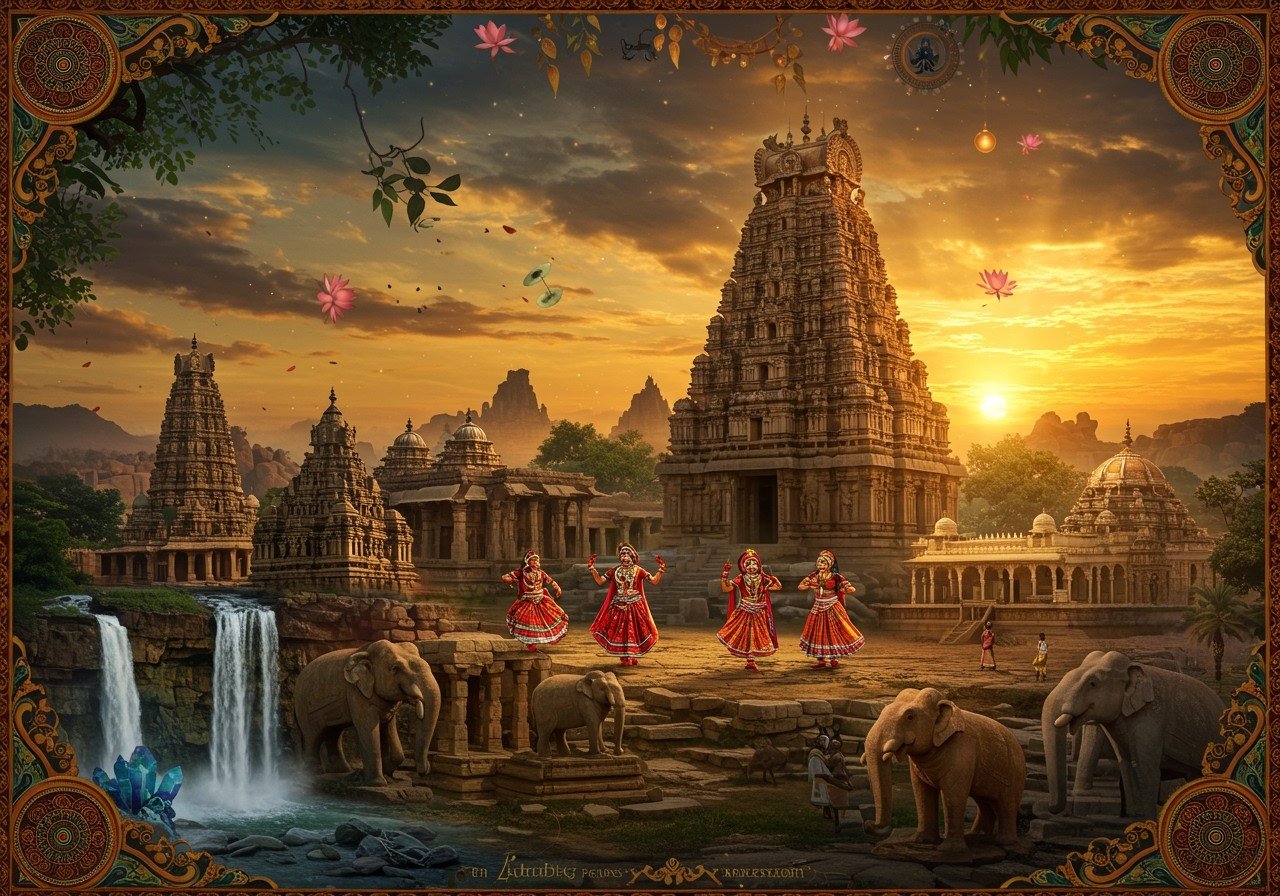
Karnataka, in southwestern India, boasts a captivating history spanning millennia. From prehistoric settlements to powerful empires, its story is a vibrant tapestry of cultural and architectural marvels. This exploration delves into Karnataka’s past, highlighting key periods and influences that shaped its unique identity.
Ancient Karnataka: Foundations of a Rich Heritage
Karnataka’s ancient history is rooted in prehistoric times, evidenced by Neolithic and Megalithic sites like Brahmagiri and Maski, offering glimpses into early human life. The arrival of the Maurya Empire brought Buddhism and established vital trade routes. The Satavahana Dynasty further enriched the region with advancements in art, architecture, and administration.
The Kadamba Dynasty, emerging in the 4th century AD, left an enduring legacy through contributions to Kannada literature and distinctive temple architecture. The Chalukya Dynasty, renowned for their architectural prowess, crafted the magnificent rock-cut temples of Badami and the structural temples at Aihole and Pattadakal, showcasing their mastery of stone. The Rashtrakuta Dynasty, patrons of art and literature, gifted the world with the awe-inspiring Ellora Caves, a testament to their artistic vision. Simultaneously, the Western Ganga Dynasty championed Jainism and erected the colossal monolithic statue of Bahubali at Shravanabelagola, a symbol of spiritual devotion.
Early Karnataka: Empires and Dynasties
The rise of the Chola Empire brought influences of Tamil culture and temple-building traditions to Karnataka. The Hoysala Empire, known for its intricate and unique architectural style, further enriched Kannada literature and art. The Vijayanagara Empire, a powerful force from the 14th to the 17th centuries, left an indelible mark with its advancements in administration, military strategies, and the construction of iconic monuments like the Hampi complex. The Bahmani Sultanate introduced Indo-Islamic architectural styles and fostered a fusion of cultures. The Adil Shahi dynasty contributed architectural gems like the Gol Gumbaz in Bijapur, showcasing their engineering brilliance. The Mysore Kingdom, under the leadership of Tipu Sultan, underwent modernization and fiercely resisted British colonization. The Maratha Empire also exerted its influence through administrative practices and cultural contributions.
Karnataka’s Religious Heritage
Karnataka’s history is deeply intertwined with spiritual traditions. Shaivism, Vaishnavism, Buddhism, and Jainism have flourished in the region, with revered saints like Shankaracharya, Ramanujacharya, Madhwacharya, and Basaveshwara contributing to the spiritual landscape. Poojn.in recognizes the importance of these traditions and offers a wide selection of authentic puja items and religious artifacts to support devotees in their spiritual practices. Explore our collection of sacred items to enhance your spiritual journey.
FAQs: Exploring Karnataka’s History
What defines Karnataka’s ancient history? Karnataka’s ancient history encompasses the prehistoric period, marked by Neolithic and Megalithic sites, and the rule of significant dynasties like the Kadambas and Gangas, who laid the foundation for the region’s cultural and architectural heritage.
Who were Karnataka’s early rulers? The Kadamba dynasty, established in the 4th century AD, stands out as one of Karnataka’s earliest prominent ruling powers, alongside the Ganga dynasty.
How did history shape Karnataka’s culture? Karnataka’s culture is a reflection of its rich historical past, shaped by the contributions of various dynasties, including the Chalukyas and Hoysalas, in art, literature, architecture, and religious practices.
Which are some key historical sites in Karnataka? Hampi, the former capital of the Vijayanagara Empire, Pattadakal, known for its Chalukya temples, and Badami, with its impressive cave temples, are among the must-visit historical sites in Karnataka. Discover more about Pataleshwar Caves.
When did the Vijayanagara Empire reign? The Vijayanagara Empire held sway over Karnataka from the 14th to the 17th centuries, leaving a lasting impact on the region’s development and architectural landscape.
What is the significance of Hampi? Hampi’s significance lies in its role as the capital of the Vijayanagara Empire. Today, its impressive ruins and temples offer a glimpse into the empire’s grandeur and architectural achievements.
What role did the Mysore Kingdom play? The Mysore Kingdom, under the Wadiyar dynasty and notably Tipu Sultan in the 18th century, played a crucial role in Karnataka’s history, particularly in its modernization and resistance against British colonization.
How has history influenced Karnataka’s present identity? Karnataka’s history has profoundly shaped its present-day identity. The legacy of its rich cultural heritage is visible in its festivals, traditions, architectural styles, and the continued reverence for its historical figures and sites. Explore India’s greatest Surya temples.
Poojn.in: Supporting Karnataka’s Spiritual Heritage
Poojn.in is dedicated to preserving and promoting Karnataka’s rich spiritual traditions. We offer a wide range of authentic puja items, including pure brass and copper items, traditional kumkum and vibhuti, puja thalis, sacred threads, and malas. Whether you are seeking items for daily worship or special occasions, Poojn.in provides high-quality products to enhance your spiritual practice.


